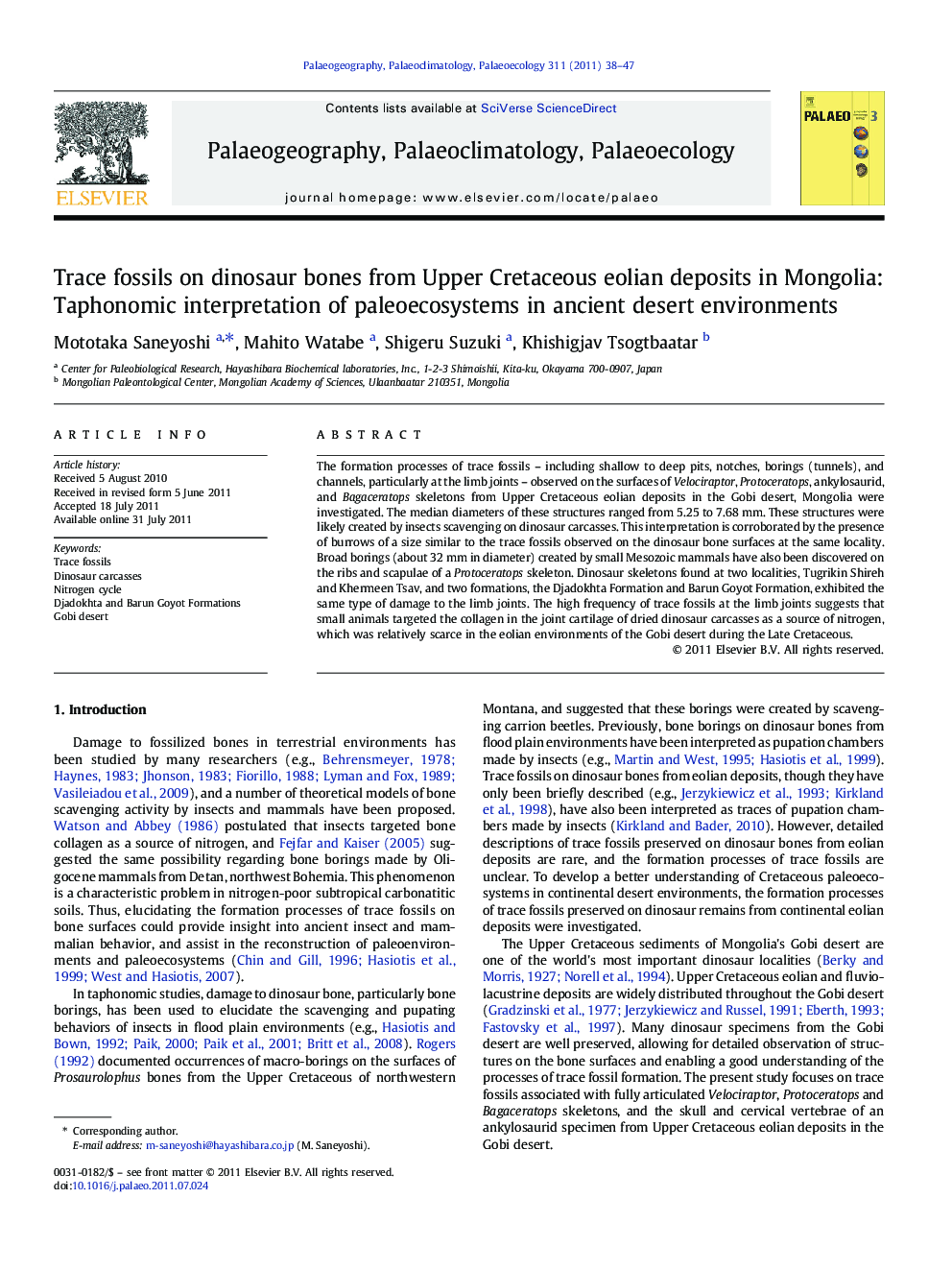| Article ID | Journal | Published Year | Pages | File Type |
|---|---|---|---|---|
| 4467080 | Palaeogeography, Palaeoclimatology, Palaeoecology | 2011 | 10 Pages |
The formation processes of trace fossils – including shallow to deep pits, notches, borings (tunnels), and channels, particularly at the limb joints – observed on the surfaces of Velociraptor, Protoceratops, ankylosaurid, and Bagaceratops skeletons from Upper Cretaceous eolian deposits in the Gobi desert, Mongolia were investigated. The median diameters of these structures ranged from 5.25 to 7.68 mm. These structures were likely created by insects scavenging on dinosaur carcasses. This interpretation is corroborated by the presence of burrows of a size similar to the trace fossils observed on the dinosaur bone surfaces at the same locality. Broad borings (about 32 mm in diameter) created by small Mesozoic mammals have also been discovered on the ribs and scapulae of a Protoceratops skeleton. Dinosaur skeletons found at two localities, Tugrikin Shireh and Khermeen Tsav, and two formations, the Djadokhta Formation and Barun Goyot Formation, exhibited the same type of damage to the limb joints. The high frequency of trace fossils at the limb joints suggests that small animals targeted the collagen in the joint cartilage of dried dinosaur carcasses as a source of nitrogen, which was relatively scarce in the eolian environments of the Gobi desert during the Late Cretaceous.
► We described trace fossils on the surfaces of dinosaur skeletons from Mongolia. ► These traces were likely created by insects scavenging on dried dinosaur carcasses. ► High frequency of trace fossils at the limb joints. ► Small animals targeted the collagen in the joint cartilage of carcasses.
